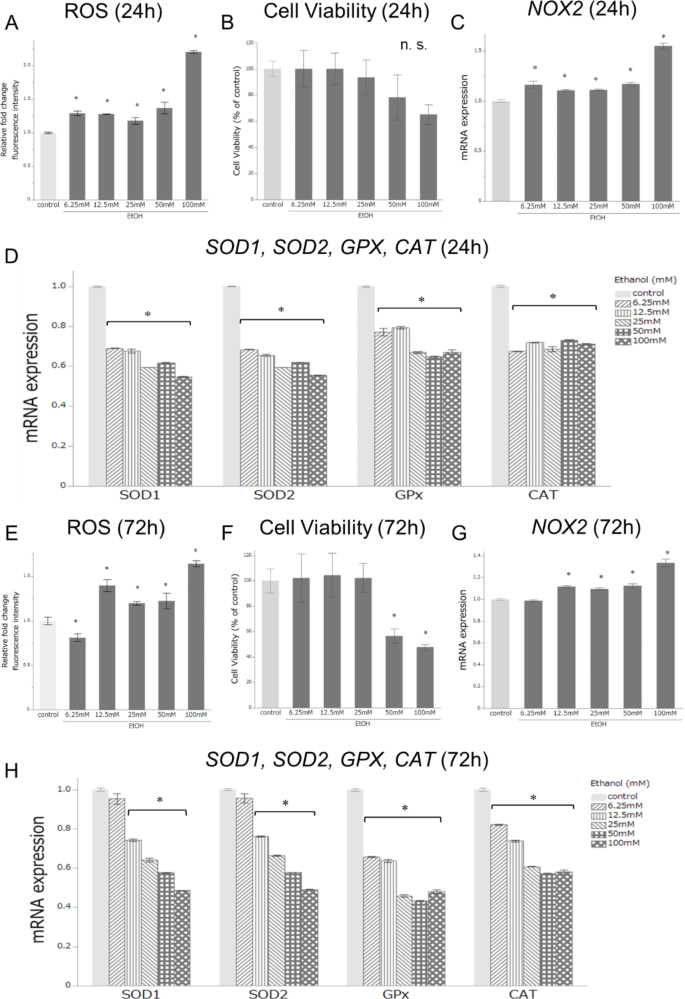Alcohol consumption is a double-edged sword – while it may provide temporary relief, excessive drinking can have far-reaching consequences for our health. A recent study has uncovered a crucial link between early alcohol exposure and the impairment of the antioxidant system in peripheral immune cells, shedding light on a potential risk factor for various diseases. The research, led by a team from the University of Tokyo, found that even light-to-moderate alcohol consumption can downregulate the expression of key antioxidant genes, particularly the superoxide dismutase (SOD1) gene, in peripheral blood mononuclear cells (PBMCs). This discovery suggests that the antioxidant system in our immune cells may be more vulnerable to the detrimental effects of alcohol than previously thought, potentially increasing the risk of oxidative stress-induced disorders. The findings highlight the importance of responsible drinking, especially among young adults, and could pave the way for early detection and prevention of alcohol-related health issues. Oxidative stress, antioxidants, and the immune system are all crucial factors in maintaining overall health, and this research sheds new light on how alcohol can disrupt this delicate balance.
Alcohol’s Insidious Impact on Peripheral Immunity
Moderate alcohol consumption can provide temporary relief from mental and physical stress, but excessive drinking can have adverse effects on the body, particularly on the immune system. Previous studies have shown that alcohol exposure increases oxidative stress and disrupts the delicate balance of antioxidant enzymes in various cells and tissues. However, the specific impact of early alcohol exposure on the antioxidant system in peripheral immune cells has remained largely unexplored.
Unraveling the Antioxidant Impairment in PBMCs
The research team from the University of Tokyo set out to investigate the changes in antioxidant-related gene expression in peripheral blood mononuclear cells (PBMCs) under the influence of alcohol. PBMCs are a critical component of the immune system, responsible for a wide range of functions, including the regulation of inflammatory responses and the defense against pathogens.

In their in vitro experiments, the researchers found that exposing PBMCs to different concentrations of ethanol (the primary component of alcoholic beverages) led to a significant increase in reactive oxygen species (ROS) and a decrease in the expression of key antioxidant genes, such as SOD1, SOD2, GPX1, and CAT. This suggests that the antioxidant system in PBMCs is highly susceptible to the damaging effects of alcohol, even at relatively low concentrations.
The Crucial Role of SOD1 in Alcohol-Induced Antioxidant Impairment
Among the antioxidant genes examined, the researchers found that SOD1 (superoxide dismutase 1) expression was the most negatively correlated with the degree of alcohol consumption in young adult participants. SOD1 is a critical enzyme that plays a key role in the body’s defense against oxidative stress by catalyzing the conversion of superoxide radicals into less harmful molecules.

The team’s findings indicate that a decreased SOD1 level in PBMCs and plasma may be a sensitive indicator of heavy alcohol consumption, especially in young adults who have been exposed to alcohol at an early age. This is a significant discovery, as it suggests that even light-to-moderate drinking can impair the antioxidant system in peripheral immunity, potentially increasing the risk of various oxidative stress-induced diseases.
Broader Implications and Future Directions
The implications of this research extend beyond the immediate impact on the immune system. Chronic alcohol exposure is known to increase the risk of developing various health conditions, such as liver disease, cancer, and neurological disorders. The impairment of the antioxidant system in PBMCs observed in this study may be a contributing factor to the development of these alcohol-related pathologies.
Moreover, the study’s findings highlight the importance of responsible drinking, especially among young adults, who may be more susceptible to the detrimental effects of early alcohol exposure. By identifying SOD1 as a sensitive indicator of heavy alcohol consumption, this research paves the way for the development of early detection and prevention strategies to mitigate the long-term health risks associated with excessive drinking.
Exploring the Complexity of Alcohol’s Impact on Immunity
While this study provides valuable insights into the relationship between alcohol, antioxidants, and peripheral immunity, it also opens up new avenues for further research. The researchers note that the study was limited to male participants, and future investigations should examine potential sex-based differences in the susceptibility of the antioxidant system to alcohol exposure.
Additionally, the interplay between alcohol, oxidative stress, and other factors, such as smoking and pre-existing medical conditions, should be explored to gain a more comprehensive understanding of the complex mechanisms underlying alcohol-induced immune dysfunction. By unraveling these intricate relationships, the scientific community can work towards developing more effective strategies for the prevention and management of alcohol-related health issues.
Author credit: This article is based on research by Akira Kado, Kyoji Moriya, Yukiko Inoue, Shintaro Yanagimoto, Takeya Tsutsumi, Kazuhiko Koike, Mitsuhiro Fujishiro.
For More Related Articles Click Here
